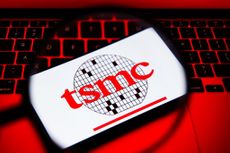A Wonderful Year for the Kip 25
Our favorite no-load mutual funds had a banner 2012, with all but six of our picks delivering double-digit returns.

It doesn't get much better. The Kiplinger 25, the list of our favorite no-load mutual funds, shot the lights out in 2012. All of our picks ended the year in positive territory, and 19 of them turned in double-digit returns.
Our international stock funds posted the biggest improvement from their 2011 results. On average, the four funds posted a 20.8% return in 2012. By comparison, the MSCI EAFE index, a proxy for developed foreign markets, returned 17.9%, and the MSCI Emerging Markets index gained 18.7%. Our 12 pure U.S. stock funds weren't far behind: They gained an average of 17.1%, compared with 16.0% for Standard & Poor's 500-stock index and 16.4% for rthe small-company Russell 2000 index.
Our six bond fund picks also shined. Despite the presence of two conservative funds (a short-term taxable bond fund and an intermediate-term municipal bond fund), the group earned an average of 10.4%, trouncing the 4.3% return of the Barclays Capital Aggregate Bond index.

Sign up for Kiplinger’s Free E-Newsletters
Profit and prosper with the best of expert advice on investing, taxes, retirement, personal finance and more - straight to your e-mail.
Profit and prosper with the best of expert advice - straight to your e-mail.
Dodge & Cox Stock (symbol DODGX) bounced back from a relatively long period of mediocrity by turning in the best score of any fund on our list. It returned 22.0%, drubbing the S&P 500 by 6.0 points. After lagging the market in four out of five calendar years, we thought long and hard about ejecting Stock from the Kip 25 in early 2012. But we chose to stick with the large-company value fund and its nine managers, who have a penchant for out-of-favor firms with promising prospects. In past periods the managers have occasionally underperformed, only to strongly overtake the broader market in subsequent years. Our hunch and our patience paid off. The very bet that dragged the fund down 43.3% in 2008 -- financial stocks -- paid off in 2012.
Two funds that focused on small and midsize companies performed well, too. Homestead Small Company Stock (symbol HSCSX) climbed 19.6%. The three managers behind this little-known fund -- Mark Ashton, Peter Morris and Stuart Teach -- lean toward out-of-favor firms that have a market value of less $2 billion and a catalyst that could lead to improved financial performance. Their bet on industrial stocks -- such as Huntington Ingalls (up 39% in 2012), which builds and maintains ships for the U.S. Navy and the Coast Guard, and Carlisle Companies (up 35%), a North Carolina manufacturing and transportation products firm -- paid off well in 2012. Fidelity Low-Priced Stock (symbol FLPSX), a massive fund that mostly adds new stocks that sell for $35 or less, climbed 18.5%. Longtime captain Joel Tillinghast now shares slices of the fund's $35 billion in assets with six new co-managers.
A strategy that worked well in 2011 -- investing in companies that steadily hike their dividends -- cooled off last year. Vanguard Dividend Growth (symbol VDIGX) ranked among the top 1% of all large-company funds in 2011 with a 9.4% return (7.3 points ahead of the S&P 500). In absolute terms, it did better in 2012, with a 10.4% return. But that trailed the S&P 500 by 5.6 points. Part of the fund's problem was the ultra-low interest rate environment. With yields so paltry, investors have been pouring money into higher-yielding stocks and bonds. That meant lower-yielding companies that are positioned to pay higher dividends in the future -- the very companies that manager Donald Kilbride invests in -- got short shrift.
The performance average for our U.S. stock fund picks includes a fund that is no longer in the Kip 25. We removed BBH Core Select (symbol BBTEX) from the list because it closed to new investors in November. The fund returned 18.7% in 2012. We replaced BBH with Mairs & Power Growth (symbol MPGFX). Although we can't claim Mairs & Power's record as our own, it's worth giving the fund a shout-out for returning 21.9% last year. The fund focuses on growing, well-managed companies based mostly in the Midwest.
On the international side, a surprising rebound in European markets bolstered our favorite overseas stock funds, all of which experienced double-digit losses in 2011. Belgium's stock market, for instance, climbed a whopping 36.1%, Denmark returned 29.6%, and Germany gained 27.2%, according to MSCI. Even troubled Italy managed a 9% rise. Some of our funds got a lift, too, from strong rallies in Hong Kong (24.4%) and Singapore (26.4%).
We added Matthews Asia Dividend (symbol MAPIX) to the Kip 25 in early 2012. It was a good move; the fund returned 21.6% last year. Manager Jesper Madsen's portfolio of 61 dividend-paying companies in the Asia-Pacific region (in both emerging and developed markets) topped the MSCI All Country Asia Pacific index by 8.0 points in 2012. Meanwhile, our two diversified foreign stock funds, Harbor International (symbol HIINX) and Dodge & Cox International Stock (symbol DODFX), earned 20.4% and 21.0%, respectively.
As for our fixed-income picks, we scored a bull's-eye when we added Fidelity New Markets Income (symbol FNMIX), an emerging-markets bond fund, to the Kip 25 in 2012. New Markets Income climbed 20.0%, finishing 2.2 points ahead of the typical emerging-markets bond fund.
Although Loomis Sayles Bond (symbol LSBRX) was our second-best-performing bond fund in 2012, with a 14.8% return, we're watching it closely. In October, Loomis announced that longtime co-manager Kathleen Gaffney was leaving to join load-fund shop Eaton Vance, where she will serve as team leader of a similar bond fund. We're confident in the remaining Loomis team; it's led by Dan Fuss, who launched the fund in 1996. However, should Fuss, who is 79, choose to retire, we would have to reconsider the fund.
Among our other fixed-income choices, Harbor Bond (symbol HABDX) -- managed by Bill Gross as a near-clone to the country's largest mutual fund, Pimco Total Return -- gained 9.3% in 2012. DoubleLine Total Return (symbol DLTNX), run by mortgage-securities masters Jeffrey Gundlach and Philip Barach, earned 9.0%. The super-conservative fixed-income funds in the Kip 25, Fidelity Intermediate Municipal Income (symbol FLTMX) and Vanguard Short-Term Investment Grade Bond (symbol VFSTX), made 4.9% and 4.5%, respectively.
We would be remiss if we didn't mention a Kip 25 fund that concerns us. T. Rowe Price Emerging Markets Stock (symbol PRMSX) gained 20.0% in 2012, topping the MSCI Emerging Markets index by 1.4 percentage points. But beating its bogey is something that the Price fund hasn't been able to crow about since 2009. Over the past five years, the fund has trailed the index by an average of 2.7 points per year. We'll be on the lookout for a better no-load, actively managed emerging-markets fund with a low initial minimum investment and tolerable annual expenses.
As for the other Kip 25 funds, Akre Focus (symbol AKREX) and Wells Fargo Advantage Discovery (symbol STDIX) -- both midsize-company growth funds -- returned 16.0% and 15.8%, respectively, ahead of the 14.1% return for the typical fund in their category. Two small-company funds, Baron Small Cap (symbol BSCFX) and T. Rowe Price Small-Cap Value (symbol PRSVX), turned in gains of 18.0% and 17.8%, outpacing the Russell 2000. And Fidelity Contrafund (symbol FCNTX), manned by the estimable Will Danoff, returned 16.3%, slightly more than the S&P 500. But large-company value fund Artisan Value Investors Shares (symbol ARTLX) missed the target, with a 13.7% return.
Finally, the Kip 25 includes three specialized funds. FPA Crescent (symbol FPACX), a go-anywhere fund that holds stocks and bonds, preferred shares, convertible bonds, and bank loans, gained 10.3%. Harbor Commodity Real Return Strategy (symbol HACMX), which invests in futures linked to a commodity index and backs them up with inflation-protected bonds and other fixed-income securities, climbed 5.2%, compared with a 1.1% drop in the Dow Jones UBS Commodity index. And Merger (symbol MERFX), which invests in shares of takeover targets after a buyout is announced, gained 3.6%.
We'll be revisiting the Kip 25, en bloc, in the May 2013 issue of Kiplinger's Personal Finance magazine. Stay tuned.
Kiplinger's Investing for Income will help you maximize your cash yield under any economic conditions. Subscribe now!

Nellie joined Kiplinger in August 2011 after a seven-year stint in Hong Kong. There, she worked for the Wall Street Journal Asia, where as lifestyle editor, she launched and edited Scene Asia, an online guide to food, wine, entertainment and the arts in Asia. Prior to that, she was an editor at Weekend Journal, the Friday lifestyle section of the Wall Street Journal Asia. Kiplinger isn't Nellie's first foray into personal finance: She has also worked at SmartMoney (rising from fact-checker to senior writer), and she was a senior editor at Money.
-
 Why Taiwan Semiconductor Stock Is Falling After Earnings
Why Taiwan Semiconductor Stock Is Falling After EarningsTaiwan Semiconductor beat expectations for the first quarter but its stock is notably lower. Here's why.
By Joey Solitro Published
-
 Strategies to Optimize Your Social Security Benefits
Strategies to Optimize Your Social Security BenefitsTo maximize what you can collect, it’s crucial to know when you can file, how delaying filing affects your checks and the income limit if you’re still working.
By Jason “JB” Beckett Published
-
 The 5 Best Actively Managed Fidelity Funds to Buy Now
The 5 Best Actively Managed Fidelity Funds to Buy Nowmutual funds In a stock picker's market, it's sometimes best to leave the driving to the pros. These Fidelity funds provide investors solid active management at low costs.
By Kent Thune Last updated
-
 The 12 Best Bear Market ETFs to Buy Now
The 12 Best Bear Market ETFs to Buy NowETFs Investors who are fearful about the more uncertainty in the new year can find plenty of protection among these bear market ETFs.
By Kyle Woodley Published
-
 Don't Give Up on the Eurozone
Don't Give Up on the Eurozonemutual funds As Europe’s economy (and stock markets) wobble, Janus Henderson European Focus Fund (HFETX) keeps its footing with a focus on large Europe-based multinationals.
By Rivan V. Stinson Published
-
 Best Bond Funds to Buy
Best Bond Funds to BuyInvesting for Income The best bond funds provide investors with income and stability – and are worthy additions to any well-balanced portfolios.
By Jeff Reeves Last updated
-
 Vanguard Global ESG Select Stock Profits from ESG Leaders
Vanguard Global ESG Select Stock Profits from ESG Leadersmutual funds Vanguard Global ESG Select Stock (VEIGX) favors firms with high standards for their businesses.
By Rivan V. Stinson Published
-
 Kip ETF 20: What's In, What's Out and Why
Kip ETF 20: What's In, What's Out and WhyKip ETF 20 The broad market has taken a major hit so far in 2022, sparking some tactical changes to Kiplinger's lineup of the best low-cost ETFs.
By Nellie S. Huang Published
-
 ETFs Are Now Mainstream. Here's Why They're So Appealing.
ETFs Are Now Mainstream. Here's Why They're So Appealing.Investing for Income ETFs offer investors broad diversification to their portfolios and at low costs to boot.
By Nellie S. Huang Published
-
 Do You Have Gun Stocks in Your Funds?
Do You Have Gun Stocks in Your Funds?ESG Investors looking to make changes amid gun violence can easily divest from gun stocks ... though it's trickier if they own them through funds.
By Ellen Kennedy Published